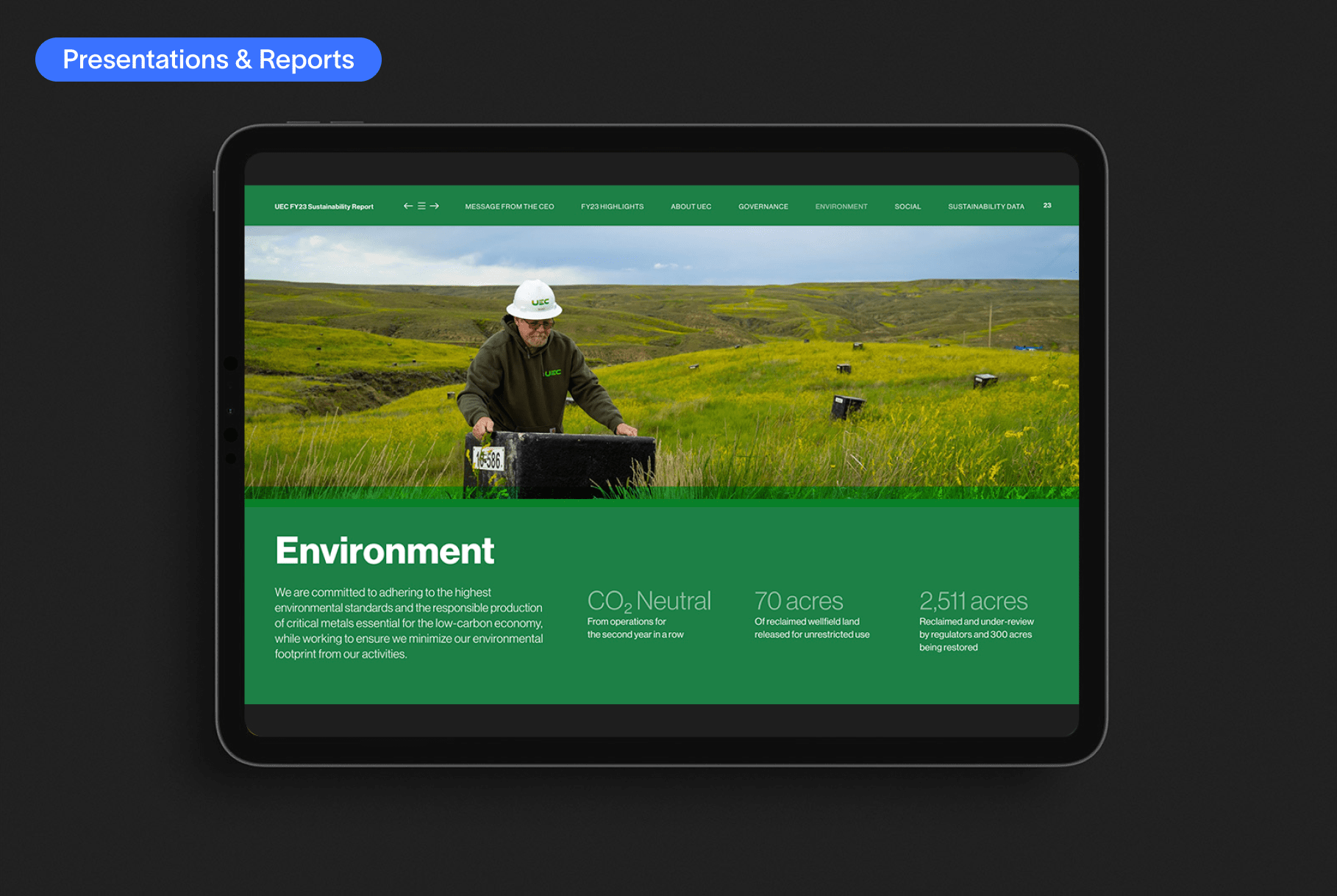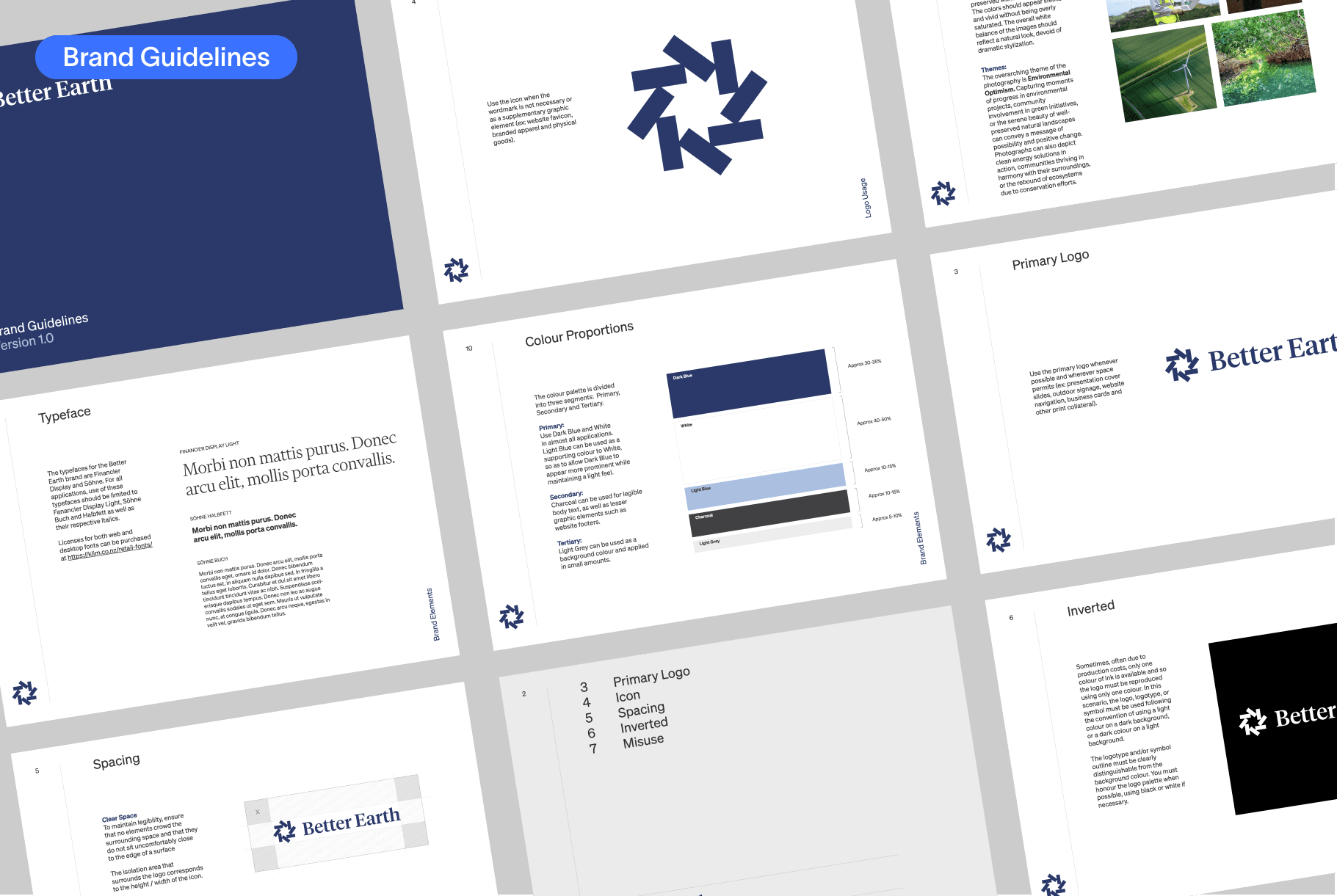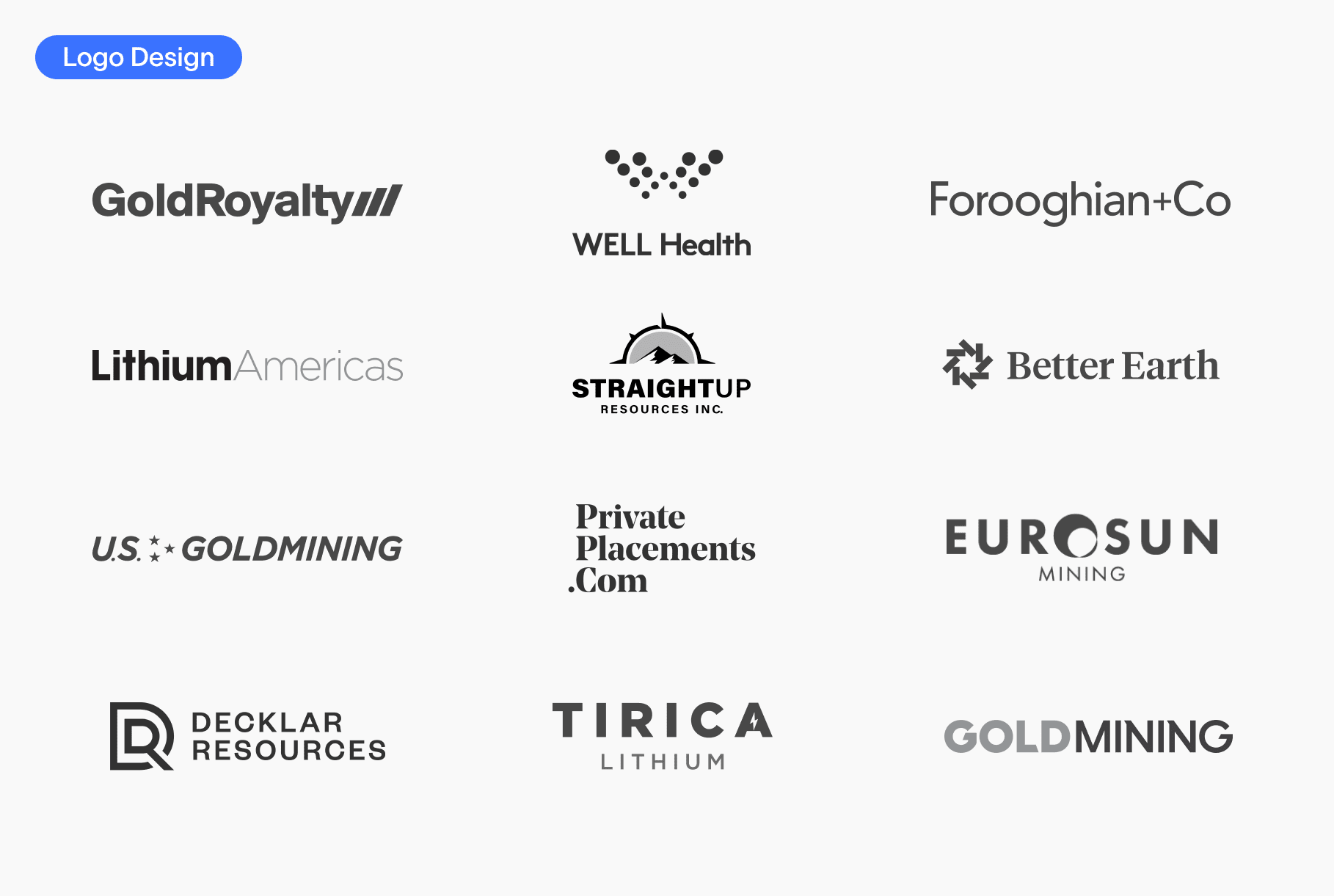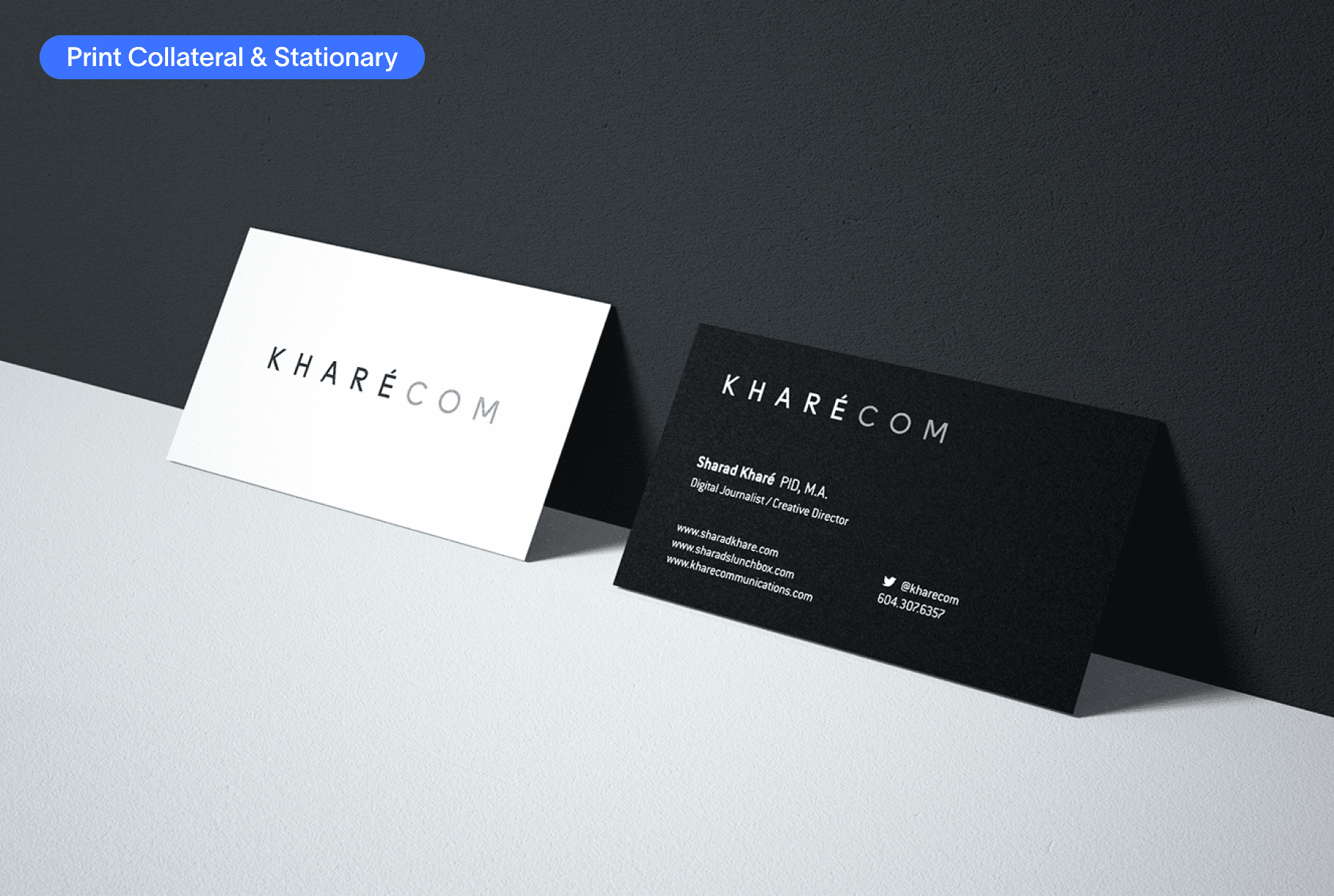Our Offerings
We provide assets essential to any public company's outreach and marketing strategy.
In addition to best-in-class websites and investor marketing campaigns, we offer all that your company needs to maintain a commanding presence with busy investors. We sweat the details, ensuring your company puts its best foot forward at every possible opportunity.
We provide assets essential to any public company's outreach and marketing strategy.
We guide your company through the complete branding and logo creation process, coalescing its values, focus, and vision into a cohesive visual identity.
Pitch the full story of your company in a concise, engaging, and eye-catching package with a custom investor deck or one-pager.
Print and digital tools including business cards, letterhead, conference materials, and more.




